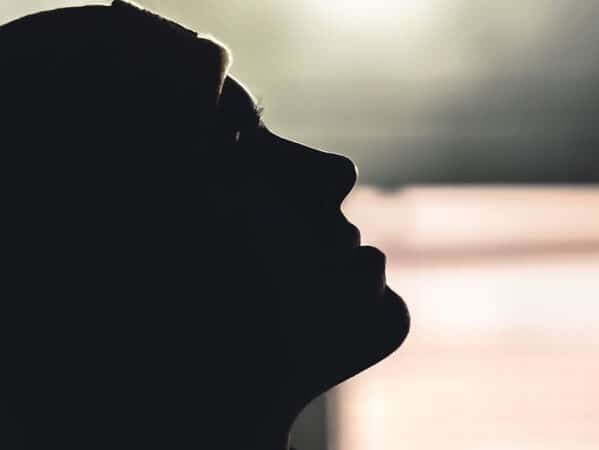How Is Rohypnol Used?
Although Rohypnol is an illicit drug and not available in the United States for prescription or medical use, individuals still acquire and use Rohypnol via illegal drug sales.
Are you or someone you know struggling with addiction?
I may have a problem I am concerned for a loved oneRohypnol — sometimes referred to as the date rape drug — is more commonly known as a drug that is given to a person without their knowledge by a sexual predator. Many other benzodiazepines are more popular for medical and extracurricular use. Medications, such as Xanax, Klonopin, and Ativan, are far more likely than Rohypnol to be abused or taken intentionally, and treatment at our Indiana drug and alcohol rehab can help you safely address benzodiazepine dependence.
Still, some individuals use Rohypnol for its desired effects, and they can become physically and psychologically dependent on the drug. If someone has been using the drug for a while, they will experience Rohypnol withdrawal if they suddenly stop taking it.
What Is Rohypnol Withdrawal?
Whether taking Rohypnol as prescribed (if outside the United States) or illicitly, physical dependence will form after a period of sustained use. Dependence on benzodiazepines can form quickly, often after just a few weeks of use. Once dependence is present, withdrawal will occur if use stops or the dose is lowered.
During Rohypnol withdrawal, individuals experience uncomfortable withdrawal symptoms, some of which can even be life-threatening. Because of this potential, medical supervision is always recommended for Rohypnol withdrawal, and a tapered approach to detox is generally advised.


Signs of Rohypnol Abuse
What Causes Rohypnol Withdrawal?
Use of Rohypnol even for a relatively short period of time and in small doses can result in drug dependence and even withdrawal symptoms when quitting the drug. Benzodiazepines are known to quickly result in physical dependence with consistent use.
While taking benzodiazepines, the brain adjusts to their continual presence. This is the new “normal” for the brain. Once that drug is no longer present, or only present in lower amounts, the brain becomes unregulated. This results in undesirable symptoms.
Withdrawal symptoms occur because of physiological and biochemical issues that have been triggering by using and then quitting the drug.
Common Symptoms of Rohypnol Withdrawal
The primary symptoms of Rohypnol withdrawal include anxiety, sleep disorders like insomnia, and seizures. Since seizures in particular can be dangerous, medical detox is always recommended.
Withdrawal symptoms often begin around 10 to 26 hours after the final dose of Rohypnol is taken. The severity of withdrawal is dependent on the individual’s drug dependency, duration and frequency of use, and individual factors, like metabolism, history of substance abuse, and co-occurring mental health issues.
Common symptoms of Rohypnol withdrawal include the following:
If you were given Rohypnol against your knowledge, call 911.
Sweating
Shaking or tremors
Agitation or mood swings
Fatigue or lethargy
Weight loss
Body aches
Numbness
Restlessness
Nausea
Vomiting
More severe symptoms of Rohypnol withdrawal include the following:
Panic attacks
Dehydration
Convulsions
Seizures
Hallucinations
Suicidal ideation
If you or someone you know is experiencing serious side effects from Rohypnol withdrawal, call 911. Emergency medical attention is needed to ensure the person’s safety during benzodiazepine withdrawal, so don’t delay in seeking help.
If you were given Rohypnol against your knowledge, call 911. Tell people around you that you were drugged and need help.
Factors That Determine the Intensity of Withdrawal Symptoms
The most influential determining factor of withdrawal intensity is the amount and frequency of use of the drug. If you have used Rohypnol or any benzodiazepine for a longer period of time and at higher doses, your withdrawal syndrome will be more intense.
Other factors that influence the intensity of withdrawal include genetic predisposition as well as current mental health state.
How Long Does Rohypnol Withdrawal Last?
The length of withdrawal depends on the circumstances of use as well as the individual in question.
Early symptoms of Rohypnol withdrawal will usually start to set in within one to three days. Intense withdrawal symptoms will start to peak around seven days after discontinuation of use.
Withdrawal symptoms generally start to fade off at about two weeks after quitting Rohypnol. However, certain psychological issues, like drug cravings, can last longer. Sometimes, these protracted symptoms can even last for years after discontinuing use.
The tapering method is generally used for Rohypnol dependence. Tapering entails taking increasingly smaller doses of a long-acting benzodiazepine to slowly wean off the drug under medical supervision. This is the recommended withdrawal approach in lieu of quitting cold turkey.
Rohypnol Withdrawal Timeline
A Rohypnol withdrawal timeline will again depend on the frequency of use and average dose as well as individual factors. Using Rohypnol for an extended period of time or in larger amounts will augment the severity of withdrawal symptoms as well as the length of time the process takes.
A tapering schedule will also influence the overall withdrawal timeline. Oftentimes, a doctor will prescribe a set dosage on a tapering schedule and if withdrawal symptoms become too pronounced, they may adjust the dose. The goal is to keep withdrawal symptoms managed during a taper.
Here is an average breakdown of what to expect during Rohypnol withdrawal if one were to stop using the drug after a period of sustained use:
1-3 Days
At this point, symptoms will usually start to appear. Common initial symptoms include depression, anxiety, mood swings, insomnia, and intense cravings for the drug.
7 Days
At the one-week mark, intense symptoms will begin to peak. These include hallucinations, delirium, and tremors or seizures.
14 Days
At two weeks after last use, many individuals will start to notice fewer and less intense undesirable withdrawal symptoms. Physical symptoms should be gone around the two-week mark, but psychological symptoms like sleep issues and drug cravings may still remain.
30 Days
After about a month, undesirable withdrawal symptoms should mostly be gone. Drug cravings for Rohypnol or other benzodiazepines may persist and continue indefinitely. Lingering psychological issues linked to Rohypnol use should be addressed with therapy.
Tapering: A Preferred Approach
Medical professionals recommend tapering off Rohypnol and other benzodiazepines once physical dependence is present. Never quit taking Rohypnol suddenly, as this can be very dangerous.
Most often, doctors switch patients to a long-acting benzodiazepine and then gradually lower the dose of that medication on a set schedule. Other medications may be used to reduce undesirable side effects. Any serious withdrawal symptoms are addressed immediately and with medical supervision. Care at a Massachusetts detox center is recommended for Rohypnol and other benzodiazepines.
If uncomfortable withdrawal symptoms begin at any point in the tapering schedule, your doctor may adjust the tapering dose. It may temporarily be raised as the body adjusts to the new dose. The goal is to prevent intense symptoms.
It’s important to understand that detox is only the first step in the recovery process. Much of the work toward sustained recovery takes place in therapy. A comprehensive approach to a full recovery is needed to reduce the likelihood of relapse back to substance abuse.
- Just a Dare or Unaware? Outcomes and Motives of Drugging ("Drink Spiking") Among Students at Three College Campuses. (May 2016). Psychology of Violence.
- Suppression of Glutathione System and Upregulation of Caspase 3-Dependent Apoptosis Mediate Rohypnol-Induced Gastric Injury. (May 2022). Redox Report.
- Experiences With Benzodiazepine Use, Tapering, and Discontinuation: An Internet Survey. (April 2022). Therapeutic Advances in Psychopharmacology.
- Protracted Withdrawal Syndromes From Benzodiazepines. (1991). Journal of Substance Abuse Treatment.
- High-Dose Benzodiazepine Dependence: A Qualitative Study of Patients’ Perception on Cessation and Withdrawal. (May 2015). BMC Psychiatry.
- Management of Benzodiazepine Misuse and Dependence. (October 2015). Australian Prescriber.















